Are you stuck in the golfing middle ground, not a novice but not quite a pro? You’re not alone.
Welcome to the world of mid handicappers, a place filled with potential and room for improvement. In this comprehensive guide, we’ll delve into just what IS a mid handicapper, and how you can elevate your game to the next level.
Unlock the potential of your golf game by reading this article because it offers a comprehensive guide to understanding and improving as a mid-handicapper!
Defining a Mid Handicapper
So, What IS A Mid-Handicapper?
A mid-handicapper is someone who has a golf handicap between 10 and 19. If you fall within this this handicap range, you are considered to be an intermediate-level golfer.
– Linda Parker
So, if you think of golf skills like a 1-5 rating, mid-handicappers are the solid 3s. They’re better than newbies and those struggling with high handicaps, but not quite at the level of the pros or those near-perfect scratch golfers.
- Skill Level: You’ve spent a good amount of time on the course, honing your swing and improving your overall technique.sc
- Game Understanding: You’re not just hitting the ball; you’re thinking about the game. You’ve started to strategize for each hole, considering elements like distance, hazards, and wind direction.
- Freedom and Fun: The best part? You can genuinely enjoy the game while you’re improving. You’re not a scratch golfer yet, but you’re on your way.
Factors That Define a Mid Handicapper
Mid handicappers often shoot 10 to 18 strokes above par. Your consistency—or lack thereof—plays a huge role in this. Here are the key factors that contribute to your mid-handicap golfer status:
| Factors | Importance |
|---|---|
| Accuracy off the Tee | High |
| Approach Shots | Medium |
| Short Game Proficiency | High |
| Putting | Medium |
Improving these areas will not only make you more consistent but also lower your handicap. So, keep practicing!
Equipment for Mid Handicappers
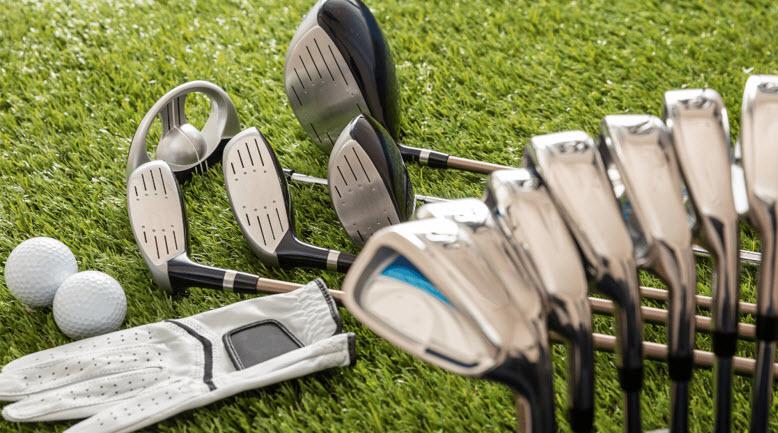
Choosing the right equipment is crucial for any golfer, even low handicap, but it’s especially important for mid-handicappers who are looking to improve. 1
From clubs to balls, the right gear can make a significant difference in your game. For instance, mid-handicappers often benefit from game-improvement irons and drivers with a larger sweet spot.
Here’s a more detailed guide, complete with specific recommendations:
Best Golf Clubs For Mid Handicappers
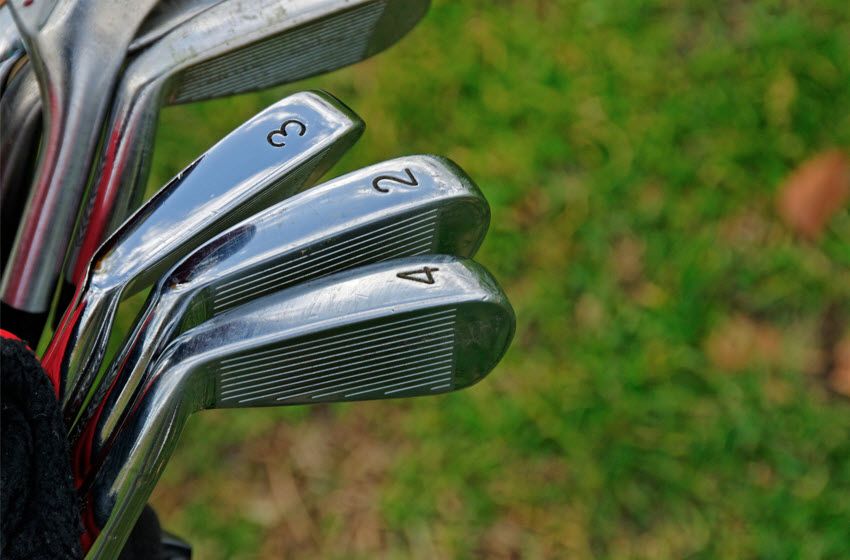
- Game-Improvement Irons: Do you want to know the best game improvement irons for high handicappers? Here’s what I’m recommending at the time i’m writing this.
- Callaway Mavrik Irons: Known for their large sweet spot and excellent forgiveness.
- TaylorMade SIM2 Max Irons: These irons offer a blend of distance and forgiveness, making them ideal for mid-handicappers.
- Cobra King SpeedZone Irons: These are designed for speed and distance while still providing a forgiving sweet spot.
- Drivers with a Larger Sweet Spot:
- Ping G425 Max: Offers a large sweet spot and adjustable loft settings.
- Callaway Epic Max Driver: Known for its Jailbreak Technology that aids in distance.
- TaylorMade SIM2 Max Driver: Provides a blend of speed and forgiveness.
- Hybrids:
- Callaway Apex 21 Hybrid: Known for its versatility and forgiveness.
- TaylorMade SIM2 Max Rescue: Provides a high launch and is easy to hit.
Golf Balls & Tees
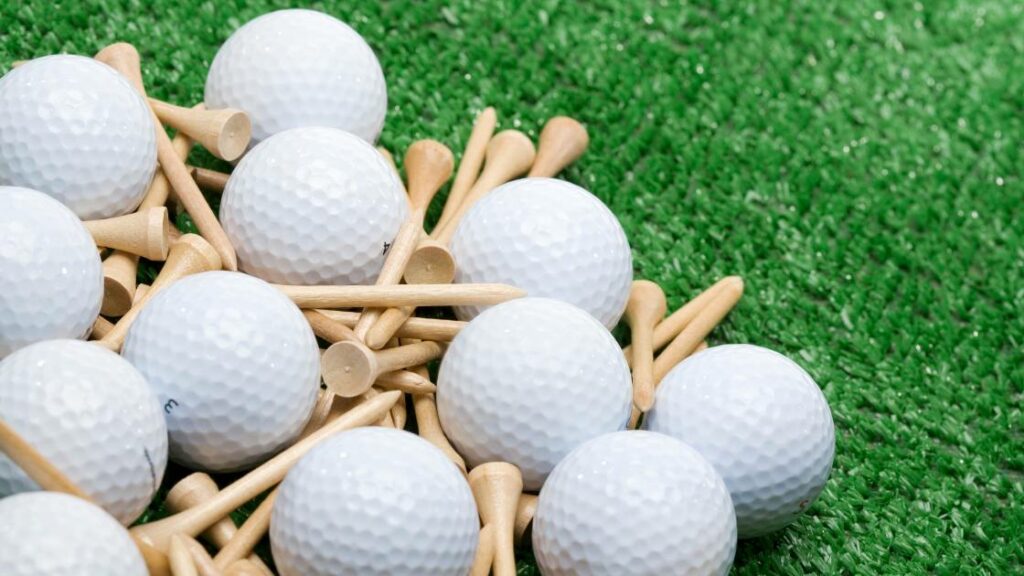
- Low Spin Balls:
- Titleist Pro V1: A tour-level ball that offers low spin for straighter shots.
- Bridgestone e6: Designed to fight slices and hooks.
- Soft-Feel Balls:
- Srixon Soft Feel: Offers a soft cover for better green-side control.
- Callaway Supersoft: Known for its ultra-low compression core for maximum distance.
Tees
- Plastic Tees:
- Pride Professional Tee System: Durable and consistent.
- Zero Friction Tees: Known for their 3-prong design that reduces contact area.
- Step Tees:
- Pride Performance Professional Tee System: Offers color-coded markings for consistent height.
- Callaway Tees: Durable and easy to insert into the ground.
Grips
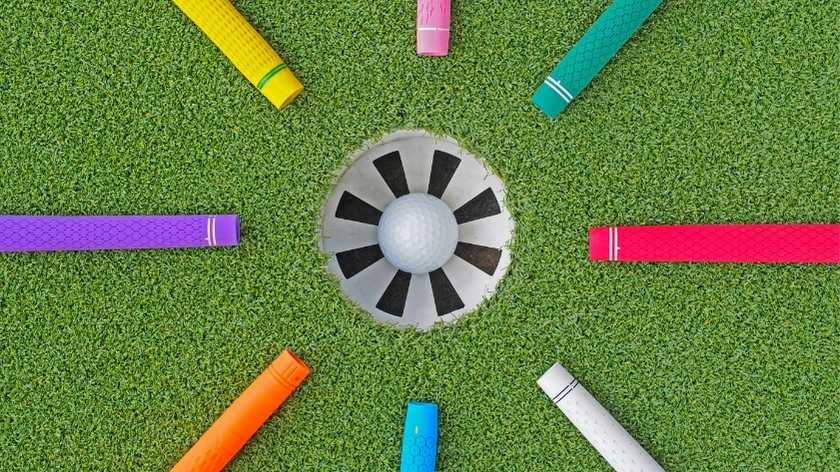
- Midsize Grips:
- Golf Pride Tour Velvet: Offers excellent all-weather performance.
- Lamkin Crossline: Known for its durability and surface traction.
Rangefinder
- Laser Rangefinders:
- Bushnell Tour V5: Offers fast and accurate measurements.
- Nikon Coolshot 20 GII: Compact and easy to use.
By investing in the right equipment, you can significantly improve your game and lower your handicap. Each of these recommendations is tailored to meet the specific needs of mid-handicappers, helping you make an informed decision.
The Challenges Mid Handicappers Face
Being a mid handicapper comes with its own set of challenges:
- Swing Consistency: One of the most common issues is maintaining a consistent swing. Focus on your technique to ensure you’re executing the same swing each time.
- Emotional Management: Golf is as much a mental game as it is physical. Keeping your emotions in check, especially after a bad shot, is crucial.
- Course Management: Many mid handicappers struggle with this. Knowing when to take risks and when to play it safe can significantly impact your golf score as well as your mid handicap score.
Common Mistakes and How to Avoid Them
Mid-handicappers often fall into certain traps that hinder their progress. One common mistake among mid handicaps is neglecting the short game, focusing too much on driving distance.
Another is poor course management, like always going for the hero shot instead of playing it safe. Being aware of these pitfalls is the first step in avoiding them.
Strategies to Improve Your Mid Handicap
To improve your mid handicap in golf again, focus on developing strategic approaches to each hole and making smart decisions that can greatly improve your overall score. By analyzing the layout of the course and taking into consideration your strengths and weaknesses, you can create a game plan that maximizes your chances of success. Here are some strategies to consider:
| Strategy | Description |
|---|---|
| Course Management | Instead of always going for the longest shot, think strategically about where to position yourself for the next shot. This may mean hitting a shorter club off the tee to set up a better approach shot. |
| Short Game Practice | A strong short game can save you strokes. Spend time practicing your chipping, pitching, and putting to improve your ability to get up and down from around the green. |
| Mental Game | Stay focused and positive throughout your round. Avoid getting frustrated by bad shots and make smart decisions instead of trying to make up for mistakes with risky shots. |
StrategyDescriptionCourse ManagementInstead of always going for the longest shot, think strategically about where to position yourself for the next shot. This may mean hitting a shorter club off the tee to set up a better approach shot.Short Game PracticeA strong short game can save you strokes. Spend time practicing your chipping, pitching, and putting to improve your ability to get up and down from around the green.Mental GameStay focused and positive throughout your round. Avoid getting frustrated by bad shots and make smart decisions instead of trying to make up for mistakes with risky shots.
Drills and Exercises
Improving your game requires targeted practice. Here are some drills specifically designed for mid-handicappers:
- Chipping Drill: Place a towel 3 feet from you and try to chip 10 balls onto it. This improves your short game.
- Putting Drill: Set up four tees around a hole at distances of 3, 4, 5, and 6 feet. Make 10 putts from each tee to improve your putting consistency.
Conclusion: Your Path Forward
You’re now armed with a wealth of knowledge about being a mid handicapper. Remember, improvement doesn’t happen overnight. Keep practicing, stay focused, and your average handicap will start to drop.
So, grab your clubs and hit the golf course now. Your journey from a mid handicapper to a low handicapper starts now. Happy golfing!
Frequently Asked Questions
What is the average score for a mid-handicapper?
The average scores for mid-handicappers typically range from 81 to 90 for 18 holes. These golfers usually have a handicap index between 10 and 19, which means they shoot 10 to 18 strokes over par for a full round. While they may not consistently achieve par, they do have the ability to score pars and even birdies occasionally.
What are the key factors that define a mid-handicapper?
The defining factors for a mid-handicapper include accuracy off the tee, approach shots, short game proficiency, and putting. These golfers have moved beyond the beginner’s level and have developed a certain degree of consistency and skill in their game. They’ve started to strategize for each hole, considering elements like distance, hazards, and wind direction.
What are some common mistakes mid-handicappers make?
One common mistake among mid-handicappers is neglecting the short game and focusing too much on driving distance. Another is poor course management, like always going for the hero shot instead of playing it safe. Being aware of these pitfalls is the first step in avoiding them and improving your game.
How can mid-handicappers improve their mental game?
The mental aspect of golf is often overlooked but is incredibly important for mid-handicappers. Keeping your emotions in check, especially after a bad shot, is crucial. Visualization techniques and pre-shot routines can help maintain a positive mental attitude, which is key to improving your overall game.
Are custom-fitted clubs beneficial for mid-handicappers?
While not strictly necessary, custom-fitted clubs can make a significant difference for mid-handicappers. As you improve, the subtle nuances of your swing become more consistent. Custom-fitted clubs take these nuances into account, providing you with equipment tailored to your specific swing mechanics, which can result in more consistent shots.

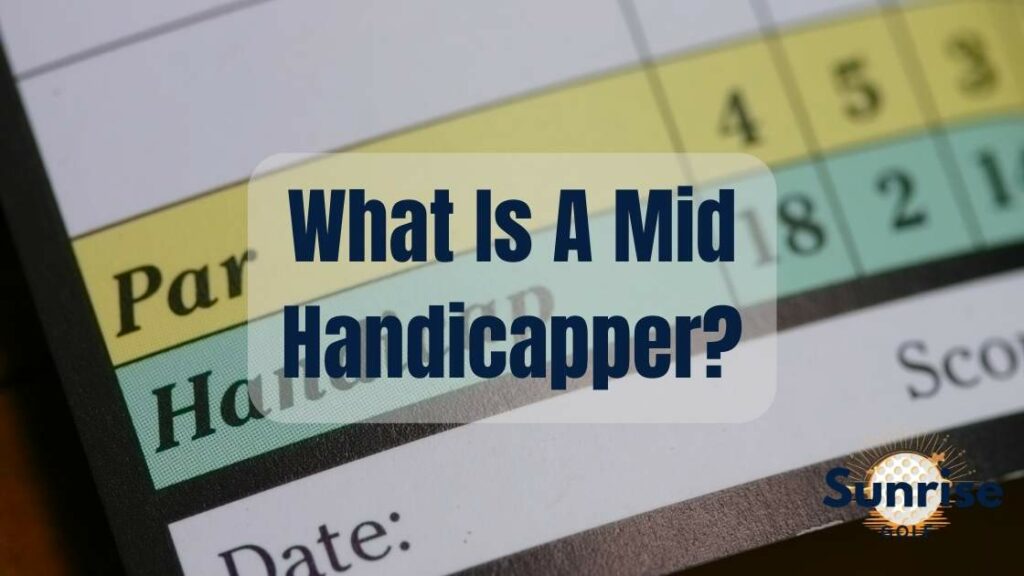
I am a 65 year old, retired mid handicapper and although we’ve never met, it seems you were writing this article specifically for me. Thanks for writing it…I am printing a copy and storing it in the pocket of my golf bag for future reference!
Hi Joseph,
Wow, you just made my day! I’m absolutely thrilled to hear that the article felt tailor-made for you! It’s comments like yours that make writing these pieces so rewarding. I’m honored that you found the information valuable enough to print and keep in your golf bag for future reference.
As a retired mid-handicapper, you’ve already got a wealth of experience on the greens, and I’m glad my article could add to your knowledge. If you have any more questions or topics you’d like to see covered, feel free to let me know.
Happy golfing, and may your grip bring you many more successful rounds!
Best regards,
Linda
I carry a 16.4 handicap. I found your article interesting. Most of what you said applies to me. Emphasizes the truth about what I need to work on.
Hi William,
Thank you for taking the time to read the article and share your thoughts. It’s encouraging to hear that you found the content relevant to your own experience as someone with a 16.4 handicap.
Golf is a game of constant learning and improvement, and it sounds like you’re on the right track in identifying areas to work on. If there are any specific topics or questions you’d like to see covered in future articles, I’d love to hear your suggestions.
Wishing you all the best in your journey to lower that handicap even further!
Best regards,
Linda
I’m 63,better physical condition than most, saving for the 4th back operation last year, replace left hip tomorrow. I’m right handed. I anticipate losing 50yds off tee and 2 clubs. Thoughts? I’m thinking higher spin balls and play a hard pull hook for distance.
You wont lose any distance with the operation. Your mobility has been restricted and shortly you will increased it. Time to be positive! been there – not an issue.
Hey Wesley,
Wow, you’ve been through a lot with those back ops and now a hip replacement. That’s tough, man. But the fact that you’re still pumped about golf? That’s awesome.
I get why you’re thinking about using higher spin balls and playing a hard pull hook. Smart moves to adapt your game, especially after surgeries like yours. But hey, maybe check in with your doc or a physical therapist who knows golf. Just to make sure you’re not going to mess up your back or new hip even more.
Once you get the green light, you might want to look into tweaking your gear. Lighter shafts, forgiving clubheads—stuff like that could help you make up for any lost distance. And don’t forget, a killer short game can be just as good as smashing it off the tee.
Good luck with the hip surgery, and can’t wait to hear about your comeback on the course. Keep that passion for golf going; it’s clearly doing something right for you.
Take care,
Linda
I’m 64 and had left hip replacement last November, as well as have crushed my pelvis, 2 major surgeries on both knees, broke my back, and torn both shoulders.
I retired this past March and spent the summer working part time for a Tiger farm team on the groundcrew, which really helped with losing weight, making me stronger, and raising my stamina.
I’ve played a lot of golf too and worked hard on my flexibilty….you really need to tell yourself that “you” can use that hip. I understand the apprehension that it might hurt or dislocate….take your time and your body will tell you how much you can turn on it. It’ll come around.
Great article. I am a 5 handicap. I Would like to Hear what you have to say to get to a scratch handicap. Been chasing it for years, just can’t get there.
Hi Jay,
Thank you so much for your kind words about the article! Achieving a 5 handicap is no small feat, and I can sense your passion for the game and your drive to improve even further.
I’ve actually written an article on what it takes to become a scratch golfer. It covers a range of topics that could be beneficial for you, from mental preparation to specific drills.
In addition to that, here are a few quick tips that might help you get closer to that elusive scratch handicap:
I hope these tips, along with the insights from the scratch golfer article, help you in your journey to achieving that scratch handicap you’ve been chasing for years.
Best of luck, Jay! I’m rooting for you.
Linda
Good stuff. Thanks
Thanks, Frank! 🙂
Linda
Great article. I actually took notes. How can l follow you? Didnt see a link. I have a 10 to 12 hdcp dpo time of year. In the last five years l had complete left shoulder replacement. Left arm folds very quickly on follow thru now. How important is that move to getting in the single digits?
Thx Michael
Hi Michael,
Thank you for your kind words about the article, and I’m glad you found it helpful! To follow me and stay updated, you can connect with me on Facebook or Twitter. You’ll find the links to both of my social media profiles in the header of my website.
Regarding your question about your left shoulder replacement and the impact on your golf swing, it’s essential to work with a golf instructor or physical therapist who can assess your specific situation. While the follow-through is crucial in golf, adapting your swing to accommodate physical changes can certainly be done. It may require adjustments and drills tailored to your unique needs. With dedication and the right guidance, you can certainly work towards improving and achieving that single-digit handicap.
Best of luck with your golf journey, and feel free to reach out if you have any more questions!
Linda